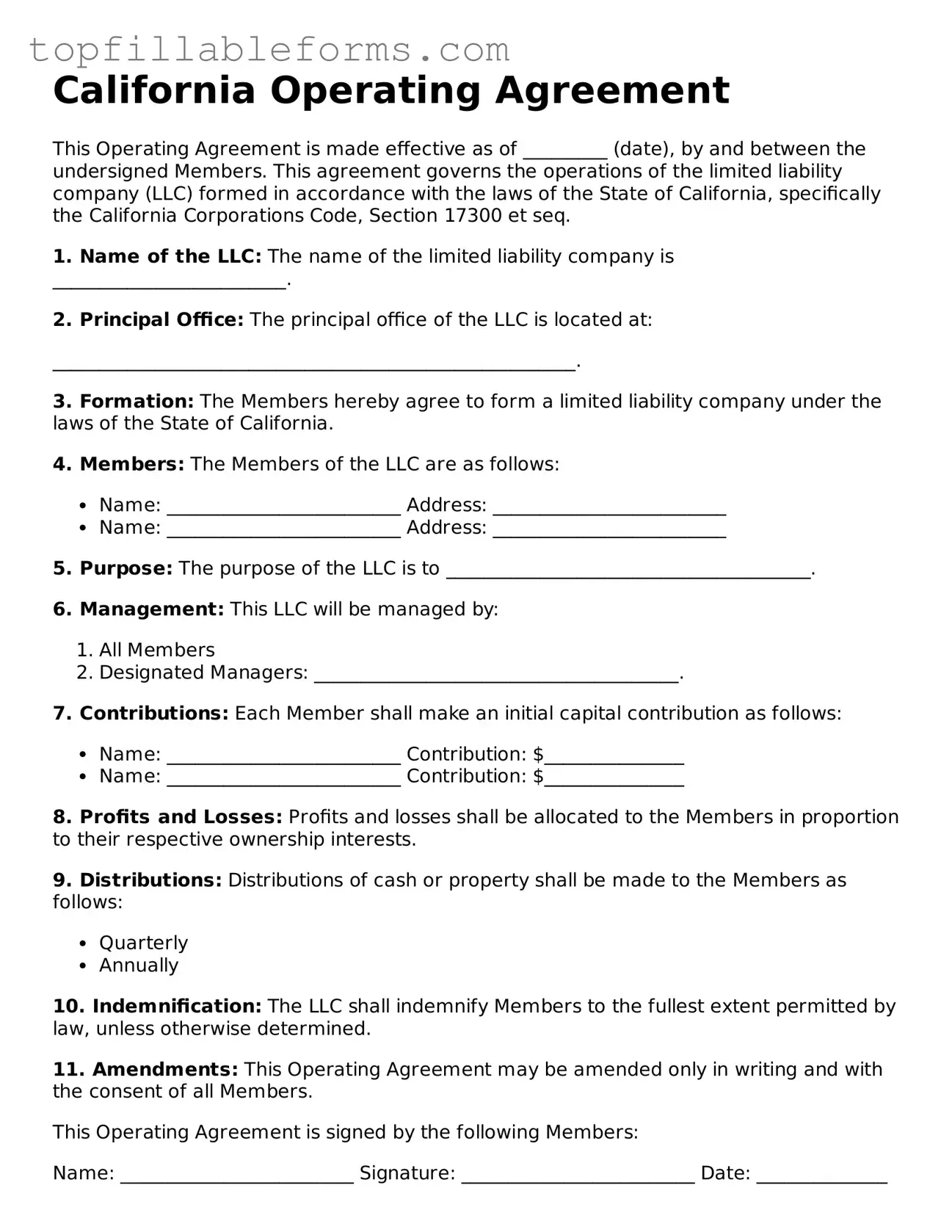California Operating Agreement
This Operating Agreement is made effective as of _________ (date), by and between the undersigned Members. This agreement governs the operations of the limited liability company (LLC) formed in accordance with the laws of the State of California, specifically the California Corporations Code, Section 17300 et seq.
1. Name of the LLC: The name of the limited liability company is _________________________.
2. Principal Office: The principal office of the LLC is located at:
________________________________________________________.
3. Formation: The Members hereby agree to form a limited liability company under the laws of the State of California.
4. Members: The Members of the LLC are as follows:
- Name: _________________________ Address: _________________________
- Name: _________________________ Address: _________________________
5. Purpose: The purpose of the LLC is to _______________________________________.
6. Management: This LLC will be managed by:
- All Members
- Designated Managers: _______________________________________.
7. Contributions: Each Member shall make an initial capital contribution as follows:
- Name: _________________________ Contribution: $_______________
- Name: _________________________ Contribution: $_______________
8. Profits and Losses: Profits and losses shall be allocated to the Members in proportion to their respective ownership interests.
9. Distributions: Distributions of cash or property shall be made to the Members as follows:
10. Indemnification: The LLC shall indemnify Members to the fullest extent permitted by law, unless otherwise determined.
11. Amendments: This Operating Agreement may be amended only in writing and with the consent of all Members.
This Operating Agreement is signed by the following Members:
Name: _________________________ Signature: _________________________ Date: ______________
Name: _________________________ Signature: _________________________ Date: ______________
